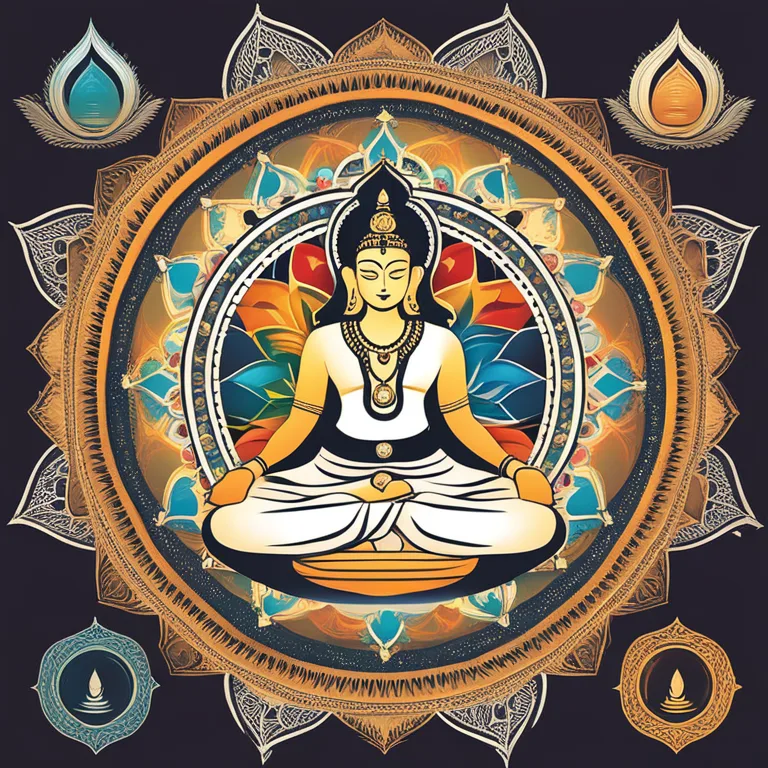
The Origins of Meditation in Yoga Philosophy
Meditation's diverse techniques owe their genesis to the venerable traditions of yoga philosophy. This article explores this integral connection.
article by Hina Kurosawa
The Genesis of Meditation Practices
Meditation, a practice as ancient as human contemplation, has woven its threads through the fabric of numerous cultures and traditions. While it appears in various forms across the world, its foundational concepts can often be traced back to yoga philosophy. Yoga, more than being a series of physical postures, is a comprehensive spiritual system that encompasses a rich tradition of meditative practices aimed at achieving mental clarity and spiritual enlightenment. Each technique, whether it’s mindfulness, transcending thought, or focusing on breath, has its roots stretching back to these early spiritual teachings.

Yoga Sutras: The Manual of Meditation
Historically, the sage Patanjali's "Yoga Sutras," a text from around the second century CE, codifies and distills the essence of yoga and its meditative practices. In this text, the eight limbs of yoga describe a step-by-step path to attain samadhi, or enlightenment. Among these steps, dharana (concentration), dhyana (meditation), and samadhi (absorption) form the triad that directly relates to meditation. These ancient guidelines form the backbone of myriad meditation practices that we see today, establishing a clear lineage from past philosophy to present-day techniques.

The Diversity of Modern Meditation
As meditation techniques evolved and spread globally, they have diversified, yet they still share a common philosophical ancestry with yoga. Today, we see this in the various meditative approaches encompassing mindfulness-based stress reduction (MBSR), transcendental meditation (TM), and heart rhythm meditation (HRM), to name a few. Furthermore, the fusion of technology and meditation through virtual reality environments and biofeedback tools illustrates a modern extension of these ancient practices, ingeniously bridging the chasm between tradition and contemporary innovation.

Scientific Appreciation of Meditation
The 21st century has seen an impressive surge in scientific interest concerning meditation. Modern research echoes ancient wisdom, highlighting meditation's benefits in stress reduction, emotional regulation, and cognitive improvement. Studies employing neuroimaging and biomarker analysis have started to shed light on how these time-honored practices impact our neurophysiology. These findings have propelled meditation into healthcare strategies, providing a modern context for an ancient practice deeply rooted in yoga philosophy.

Integrating Meditation in Daily Life
Embracing meditation in the hustle of modern living draws on yoga's principle of integration—harmonizing body, mind, and spirit. Yoga's influence is evident in programs like corporate mindfulness training, educational concentration exercises, and wellness apps that seamlessly introduce meditative techniques into daily routines. These applications reflect yoga's comprehensive approach to well-being, emphasizing equilibrium in all facets of life, not just on the meditation cushion or yoga mat.
Cultural Resonance and Evolution
While meditation has its roots in the soils of yoga philosophy, it has transcended geographical and cultural barriers, transforming and enriching every community it touches. As the world becomes increasingly interconnected, meditation traditions merge, giving rise to new hybrids that resonate with contemporary seekers. Such syncretism demonstrates the yoga philosophy's enduring relevance and capacity for cross-cultural evolution, assuring these practices will continue to flourish and adapt long into the future.
Published: 1/8/2024
Modified: 1/8/2024
More predictions
Come back here soon to learn more about yourself and your future


Meditation Techniques: A Handbook
Discover the breadth of meditation methods to enhance your wellness journey.


Meditation: Finger Techniques Explored
Discover the art of finger meditation to harmonize body, mind, and spirit through ancient practices for modern wellness.


Meditation Techniques to Soothe OCD
Discover meditation practices designed to help manage OCD symptoms through mindful awareness and relaxation.